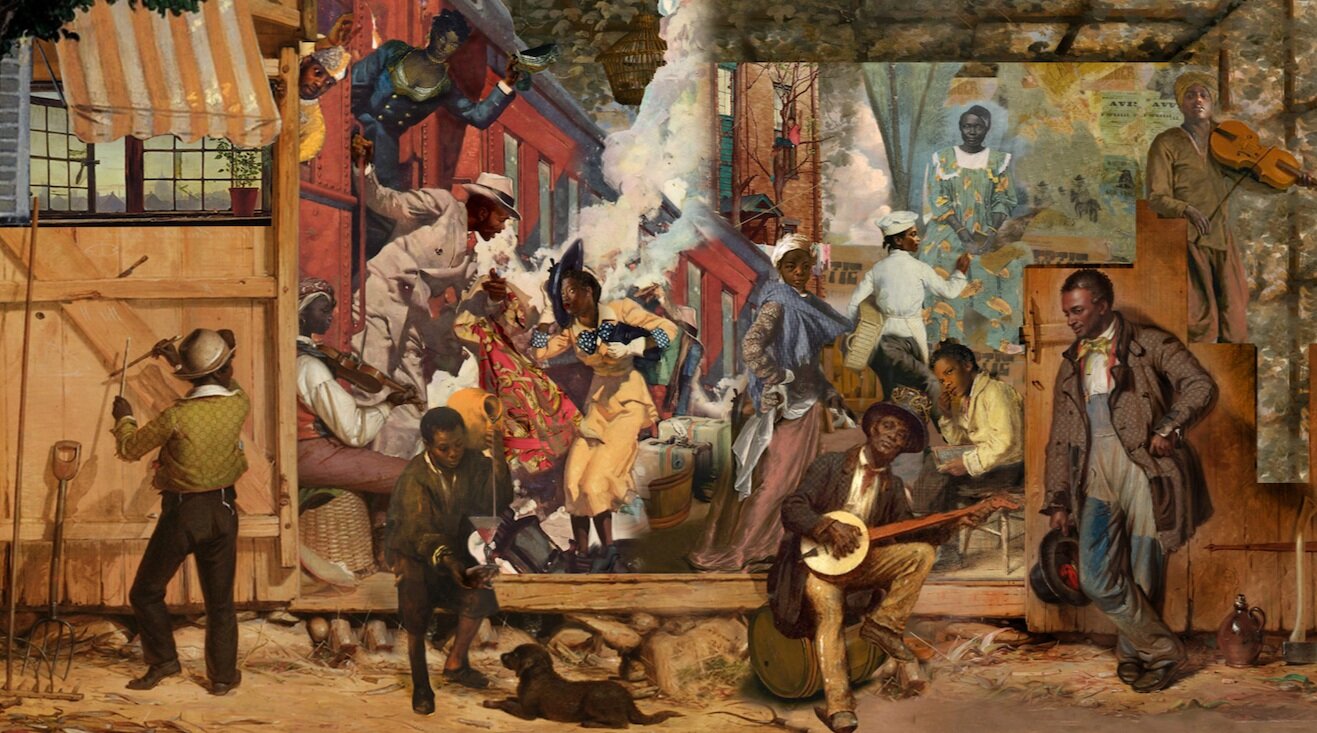
Artist Statement
My works examine the sadistic entanglements that make up our visual culture, language, and world history. By using a combination of digital illustration and painting tools, I weave, stitch, and mesh together paintings of our past that precede copyright laws with pieces of contemporary information to create a new unified image. Similar to sampling in music, I take a section of one painting and metamorphosize it into a greater idea with parts of other paintings. At first, the spatial cohesion in the painting maintains an illusion of conventional space, yet the composition is intended to break apart under scrutiny. In many of the paintings I source from, the images of people of color are described in an unfortunate event or positioned as the undermined figures in the painting. While deconstructing these historical paintings, I pick out these subjects and create scenarios and portraits of them as the main focus of the compositions. The figures then become symbols of a dismissed culture and a time period providing a foil to my retelling of their fiction which elevates them into further conversation. The use of new media technologies and digital collage allow me to create a narrative formatted to our time. By manipulating and transplanting the original figure and space, I reclaim and transform the significance of what these subjects now mean. Removing them from their original Three Boys by Bortolome Esteban Murillo compositions gives me the ability to recontextualize their future. Rather than simply exposing the position of the figure, I deconstruct the painting’s structure of power with digital tools, allowing both the medium and the subject to exist in a new light.
A clear-cut example that I have used in my work would be Three Boys by Bortolome Esteban Murillo. The painting portrays a young black boy being denied food by two young white boys as he carries a jug of water on his shoulder. I wanted my rendition of him alluding to the idea of fruitfulness and inclusivity, a helping hand as he may have something to offer, so the jug became a symbol of togetherness, a part of something bigger than denial, the opposite of rejection.